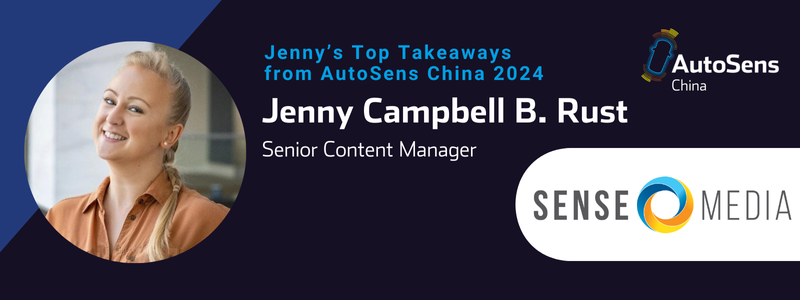The inaugural AutoSens China took place last week in Hefei, a short train journey from Shanghai and a burgeoning hub of automotive innovation within China. With keynotes from BMW, VW, NIO, and Momenta; VIP site visits to NIO, VW, and the Grand Union of Innovation; live and static car demos; and a buzzing exhibition hall, the premiere put AutoSens on the map as an event not to be missed. Global and local companies came together to share ideas, showcase technology, and make connections. With so much going on, it was hard to pin down the most interesting moments, but some key themes did emerge. Here are my top takeaways:
Regionalised Products
OEMs have noted the importance of diversifying product lines to regional markets. A ‘one size fits all’ approach becomes cumbersome and counterproductive – with different regulations, driving styles, and demands, there is no possible unified approach that works without serious complexity. It is vital to customise offerings to appeal to each market. Torsten Wendler, Head of ADAS and COO of VCTC (Volkswagen China Technology Company), used his opening keynote to outline this, stating that VW was ‘caught sleeping’ and is now playing catch-up with Chinese OEMs, who have been working towards autonomy at an aggressive pace. Now, with the combination of VW Anhui, VCTC, and Carizon (Cariad & Horizon Robotics JV), along with many active partnerships, Volkswagen is arguably leading the charge with their ‘in China, for China’ approach.
Similarly, Mark Zellerhoff of BMW shared his view on the importance of regionalisation from a safety perspective. A deep understanding of the use cases, regulatory framework, most likely manoeuvres, and possible edge cases for each market will surely produce more robust results.
While regulation struggles to keep pace with technology, it is down to the OEMs (and supply-chain stakeholders) to decide how safe is safe enough. Until we have proven that autonomous vehicles are safer than human drivers, user acceptance is likely to remain low.
Innovation! Innovation! Innovation!
Folks in China are keen to show the world the scientific and technological advances they are making, with a great deal of investment being made in ‘S&T’. It’s a competitive place, but also a curious one – everyone was keen to learn from each other, with conference sessions well attended and conversations flowing. There was a small but mighty collective of local CEOs who had spent time working for large legacy organisations in Germany before returning home to found their own companies. I’d place a significant wager that the most important lessons learned focus less on ‘what to do’ and more on what not to do in order to thrive in this fast-paced industry. The drive for success is palpable. There’s a work ethic in China like no other, with 12-hour days being the norm. My second wager would be more conservative, but I’d still be willing to bet that we’ll see L4 here before anywhere else.
There’s Appetite for InCabin
In our first year in China, we took our legacy conference, AutoSens, to focus on the exterior sensor suite, but what about the baby sister? On stage, SemiDrive Semiconductor discussed their latest chip, which supports and enables smart infotainment systems, and Sleep Advice Technology (SAT) brought their smart sleep prediction hardware. On the exhibition floors in both China and Barcelona, we had many conversations expressing interest too. Next year, we’re looking to go back to China bigger and better, building on the relationships we’ve developed in the lead-up to this iteration. Does that mean we’ll get to take InCabin to China in 2025? Only time will tell…







